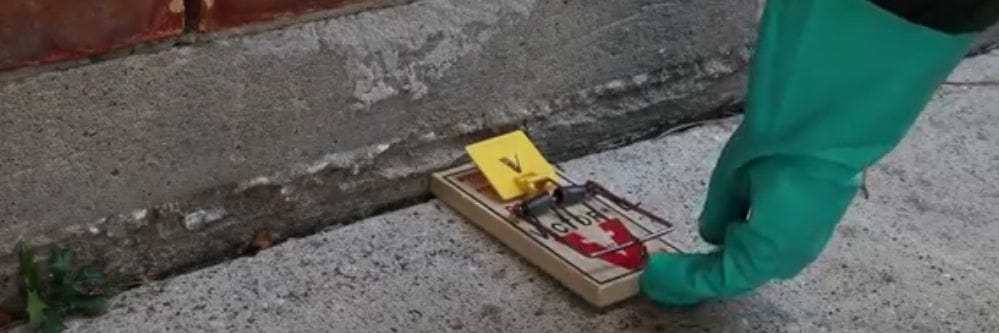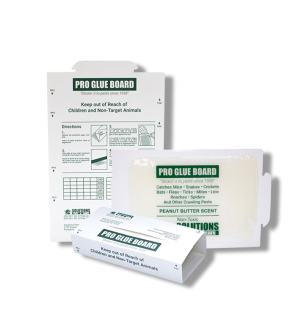Gain access to personalized product screening, the best pricing, rewards, and more!
Most Effective Products
9 Mouse Trap Mistakes You Can Avoid
Have you ever been outsmarted by a mouse? We are all human and mistakes are bound to happen, especially when it comes to mice control. Mice, in particular, can be worthy adversaries for any DIY pest control enthusiast, which makes their extermination and trapping even more rewarding.
There’s a great feeling of accomplishment when you know that you, through your own efforts, successfully dealt with your mouse infestation and prevented further damage and disease from entering your home.
But let’s say you’ve already bought some mouse traps, but still, you haven’t had a single catch. Could it be the products? Could it be the bait? You might ask yourself, “What on Earth am I doing wrong?”
In our 60-plus years in business, we’ve learned some of the most common mistakes people make when setting mouse traps, and our experts are here to show you how you can avoid them.
Following this simple guide will ensure that your mouse traps will be more successful and help you finally eliminate your mouse infestation. So, without further ado, here are the 9 most common mistakes you’ll make when setting your mouse traps and how to avoid them.
Too Much Bait

Solution: Use only a small portion to force them to come in contact with the trap
One of the most common mistakes people make when setting mouse traps is using too much bait. Maybe you put a very big helping of Peanut Butter or Chocolate on a trap and have had no luck catching mice.
Believe it or not, using too much bait will allow mice to access the food without triggering the mouse trap. Experts recommend finding the perfect amount of bait, not too big and not too small, usually a pea-sized amount.
Using the Wrong Bait

Solution: Don’t use cheese; use peanut butter instead
For years, the cliche for baiting mouse traps was to place a piece of cheese on or near a trap to try and lure mice. The truth is, cheese might not be a good idea to use alongside your mouse trap. You’re better off using foods high in carbohydrates, like Chocolate, or grain and seed-based foods, like Peanut Butter and Nutella.
Another great rule of thumb is to use different kinds of bait with your traps. A helpful selection of foods (peanut butter, chocolate, meat) is sure to entice any mice.
It would be best to have a different tactic to lure overwinter mice inside your home in the cold months. As with most pests, mice are less active during the winter. However, that does not mean they won't scavenge through your home for supplies for their nests. This is where you have a golden opportunity to catch them.
Nest-building materials like cotton balls and dental floss might provide an edge when baiting for mice in the winter.
Not Diversifying Traps

Solution: Don’t rely just on snap traps; use glue traps and poison baits as well
The golden rule regarding pest control is relying on different methods and products to achieve results. This is one of the most common mistakes people can make. By not using different kinds of traps and relying just on snap traps, you limit the results you can achieve.
Plus, although efficient, snap traps are not as effective when dealing with a severe infestation because they are limited to only catching one mouse at a time. If you want to create lasting results, especially when dealing with a severe infestation, glue traps, snap traps, poison baits, and repellents might be the way to go.
Traps Spaced Too Far Apart

Solution: You should set a trap every 2 to 3 feet when dealing with a severe mouse infestation
You set your traps but have found no success so far. Something to consider is that you didn’t place enough traps. Professionals state that a good baiting strategy is placing mouse traps every 2 to 3 feet apart along the walls where mouse activity has been noticed.
In fact, where a large number of mice have been sighted, traps are usually placed one inch apart. A good rule of thumb is to use at least six types of traps for every mouse, so remember to plan accordingly when baiting.
You Ruined The Bait
Solution: Did you touch the Bait Without Gloves? Mice can tell and will avoid it. Make sure you have on gloves.
One of the most common mistakes anyone can make when placing baits is using their hands. Setting snap traps or tamper-resistant mouse stations is useless if you touch the baits without gloves.
Mice, with their incredible sense of smell, can tell if the bait is a trap if they can smell your scent on the bait or on the trap. Remember to use gloves when handling the trap, resetting the trap, and disposing of the mice, as your scent can alert the rest of the mice that something is up.
Wrong Placement
Solution: Close the traps to the wall and avoid open spaces.
This might seem like an obvious mistake to avoid, but some people still make it. Placing the traps in open spaces will not yield results. Remember that mice are more prone to traveling alongside walls than venturing into an open space.
So remember to keep that in mind when placing your traps. Put them close to the walls where they usually travel.
Wrong Angle
Solution: The angle at which you put your Traps can affect the outcome
Another common mistake someone might make is putting the traps at the wrong angle. If you’re using a bait station, remember to put the station's opening close to the wall, and if you’re using a snap trap, place the trap perpendicular to the wall, with your chosen bait facing the wall.
Angles might seem like a small detail, but in some cases, they could make a world of difference.
Not Enough Traps
Solutions: Go all out the very first night with all your mouse traps
Another mistake people might make when setting mouse traps is not placing enough traps on their first night of baiting or not starting big enough and going all out, instead opting to pace themselves with their resources.
The way to go is to start off strong from the very first night with different traps (glue traps, snap traps, etc.), different types of baits (peanut butter, chocolate, poison baits), and numerous traps in different rooms.
Mice are incredibly intelligent and will know if one of their relatives does not come back to the nest. After they know something is up, they will be more hesitant to try the bait in the mouse traps and scavenge more sparingly.
So remember always to have a big opening night.
No Patience
Solution: Sometimes, all it takes is patience and a little time.
Patience: We could all use a little more patience in our lives. When it comes to setting mouse traps, patience and a little time are super important for success. As mentioned above, mice are highly intelligent creatures. They adapt, they learn, they notice when something has been changed in their environment, and they’re even able to smell your presence in the newly placed bait.
Practicing good hygiene and limiting the food supplies found in your home, will slowly push them to risk it all for a taste of your bait. And all it takes is a little patience.
Key Takeaways
- If you are not getting satisfying results with your mouse trap placement, factors like placement, not using the right bait, and not using gloves may be why mice aren't being caught.
- Utilize multiple types of traps (such as glue, snap, and humane live traps) to improve your chances of catching mice.
- Most of all, be patient with the process, as it can take time for the trap to catch a mouse.












